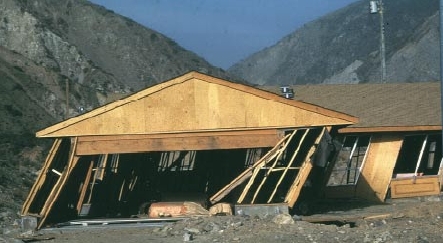As with all of my posts, Canadian context warning. Curl up to the fire, grab a bottle of your favourite adult beverage, and settle in - for I shall tell you the story of bracing.
This is something I've been reading into a lot lately too. For some reason in my area it was very loosely enforced by inspectors, but now it is getting cracked down on hard. I suggest looking into, 'BCSI-B1C: Guide for Handling, Installing, Restraining & Bracing of Trusses' (
OK, so first off we have the two different types of bracing: Member bracing, and Permanent Bracing.
Individual Member Bracing
This is what you are referring to. It can consist of lateral members spanning in-between trusses, T or I bracing on individual members, sheathing, or metal strapping.
The main purpose for this type of bracing is to reduce the bucking length of the individual truss members, and to assist in erection / spacing of the trusses.
It is important to note that these are usually automatically generated by the truss design software and can sometimes be wildly impractical (like mid-span lateral bracing on a sheathed Party Wall Truss). A good designer will catch it early - but there are usually alternative means.
This is a truss failed by individual member bracing. Note that the later bracing only spans from one member to another - providing very little actual resistance to buckling. It should be noted that this failure can still occur with continuous lateral bracing & this is why the permanent bracing is vital.
Permanent Bracing
This is the one we are responsible for. The permanent bracing is not the responsibility of the roof truss designer, and this is made very clearly in the opening remarks of, 'Truss Design Procedures and Specifications For Light metal Plate Connected Wood Trusses' by Truss Plate Institute of Canada.
The permanent bracing is designed to ensure complete stability of the roof system and consists of 3 main components:
Bottom Chord Bracing
-Lateral bracing running perpendicular to trusses, spanning 10'-0" oc typically, and running the full building length. It ensures no excessive displacement of trusses. Typically 2x4 but 1x4 can be used.
-Ceiling plane sheathing can be used as a substitute but it should be noted that the building may be sitting a long time without ceiling plane sheathing installed.
-Zig bracing of the bottom chord is also suggested, this is a diagonal member that runs between the full length lateral bracing. 20'-0" oc (every 2nd lateral). Serves the purpose of avoiding lateral racking of the roof.
Web Bracing
-any web that has a lateral braced spec'd in the truss drawing shall have one set of cross braces spanning at least 4 trusses running from heal height to maximum truss height. In addition the vertical web closest to the centre shall have the same. This is to prevent vertical racking of the truss system.
Top Chord Bracing
-Typically this is the roof deck sheathing, but in absence of sheathing for extended periods provide lateral bracing in the same manner as the bottom chord bracing.
This is a good example of racking, it just isn't in the roof though (my google-fu is off today). As you can see the members maintain their individual spacing, but have failed to remain in plane. This can happen vertically as shown, or laterally under certain conditions.


